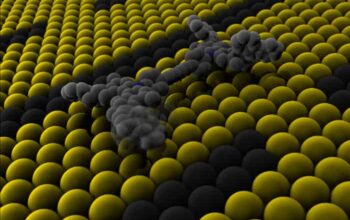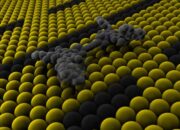In a world increasingly dominated by technological advancements, the pursuit of precision has reached unprecedented heights. At the heart of these endeavors lies quantum mechanics, a realm where classical intuitions dissipate and the behavior of matter and energy is governed by the peculiar laws of the microscopic world. This fusion of quantum physics with cutting-edge technology is leading to breakthroughs that promise to redefine precision measurement. The so-called “quantum limit” has historically served as a barrier, constraining the accuracy of various measurement techniques. However, recent developments indicate that this barrier may be surmountable, paving the way for novel applications across multiple scientific disciplines.
To fully grasp the implications of these advancements, it is essential to delve into the concept of quantum limits. Quantum mechanics dictates that there are fundamental limits to the precision of measurements due to the intrinsic properties of particles at the quantum scale. These limits arise from phenomena such as quantum entanglement, uncertainty principle, and wave-particle duality. For instance, Heisenberg’s uncertainty principle posits that the more accurately one measures the position of a particle, the less accurately one can measure its momentum, and vice versa. This trade-off has led to a conceptual ceiling on the precision achievable in measurements.
However, the landscape is shifting. The introduction of sophisticated technologies and innovative methodologies has allowed researchers to exploit quantum superposition and entanglement to enhance measurement precision beyond conventional limits. Quantum sensors, such as atomic clocks and gravitational wave detectors, have demonstrated that the precision of time and distance can be significantly improved, permitting measurements that are far more sensitive than their classical counterparts.
One notable area of advancement exists within the realm of quantum optics. Optical measurements at the quantum level have begun utilizing squeezed light—a technique that manipulates the uncertainty of photons to minimize one variable’s uncertainty while enhancing another. Such methodologies allow for unprecedented sensitivity in measuring optical phenomena, leading to improved signals in fields ranging from telecommunications to the fundamental study of light itself.
Further exploration of quantum metrology, a field dedicated to understanding how quantum effects can be utilized in measurement, has yielded promising results. Quantum metrology leverages entangled quantum states to outstrip classical measurement limits. For instance, entangled photons can be harnessed in the design of interferometers that measure minute changes in phase with considerably heightened accuracy. By deploying these advanced techniques, researchers can uncover insights in several disciplines, including gravitational physics and quantum information science.
Another significant development is the advent of quantum networks comprising quantum bits, or qubits. These qubits, when entangled, can lead to new forms of communication and information processing. Quantum key distribution protocols demonstrate how securely encrypted information can be exchanged, achieving a level of security that is theoretically unbreakable due to the principles of quantum mechanics. This breakthrough represents not just an advancement in telecommunications but also sets a foundation for future quantum internet technologies, the implications of which stretch into realms such as cybersecurity and global communication frameworks.
The realm of quantum computing further exemplifies the transformative potential of breaking through quantum limits. Classical computers process information using binary digits, relying on bits that hold discrete values of 0 or 1. In contrast, a quantum computer utilizes the properties of qubits, which can exist in superposition, enabling them to represent multiple states simultaneously. This key distinction gives rise to an exponential increase in computational capacity, allowing for the resolution of problems deemed infeasible for traditional computing architectures. The potential applications span a multitude of fields: from drug discovery, where quantum simulations can model complex biological interactions, to optimization problems in logistics and finance, advancing industries into new frontiers.
Beyond the immediate engineering and computational implications, the breakthroughs achieved through quantum advancements necessitate a paradigm shift in our philosophical understanding of reality and observation. The ramifications extend into the broader implications of how we conceptualize measurement science. Questions arise regarding the nature of determinism, the role of the observer, and how information is processed and structured within quantum frames. The discourse on these topics fosters a deeper inquiry into the relationship between humans and the quantum frontier, inviting interdisciplinary dialogues that intertwine physics, philosophy, and technological ethics.
The integration of quantum techniques with practical applications is an evolution that necessitates collaborative efforts across scientific domains. The burgeoning field of quantum technologies has begun to attract significant investment and interest from both public and private entities. Educational institutions are increasingly prioritizing research initiatives in quantum sciences to propel understanding and innovation. As industries recognize the potential of quantum advancements, the development of a skilled workforce adept in both the theoretical frameworks and practical applications of quantum physics will become critical.
In conclusion, breaking through the quantum limit signifies more than a mere technical achievement; it encapsulates a holistic transformation within the tapestry of scientific inquiry and technological advancement. Precision just got sharper, setting the stage for a convergence of knowledge, creativity, and foresight. As we venture deeper into this quantum era, the implications of these advancements will reverberate across a multitude of sectors, challenging existing paradigms and fueling the next wave of scientific progress. The journey into the quantum realm remains fraught with challenges, yet it also opens the door to an exquisite landscape of possibility, where the boundaries of human understanding continue to expand.










